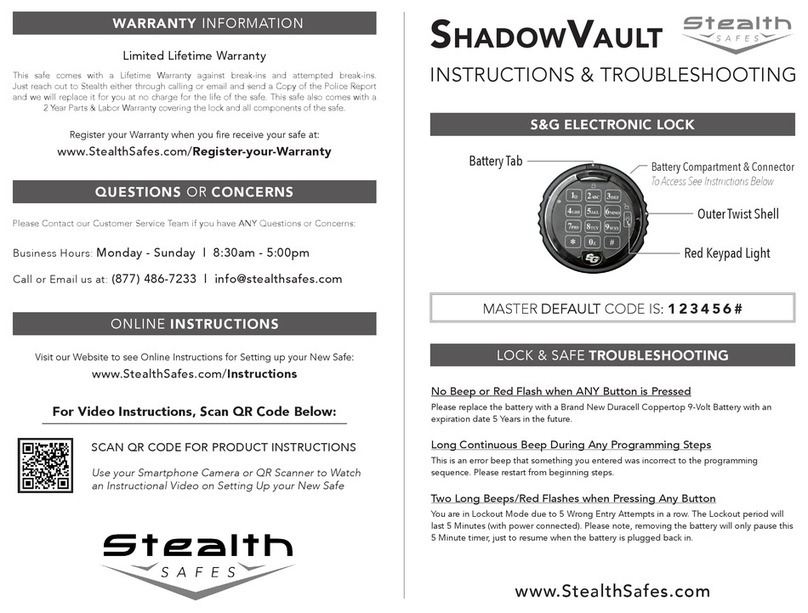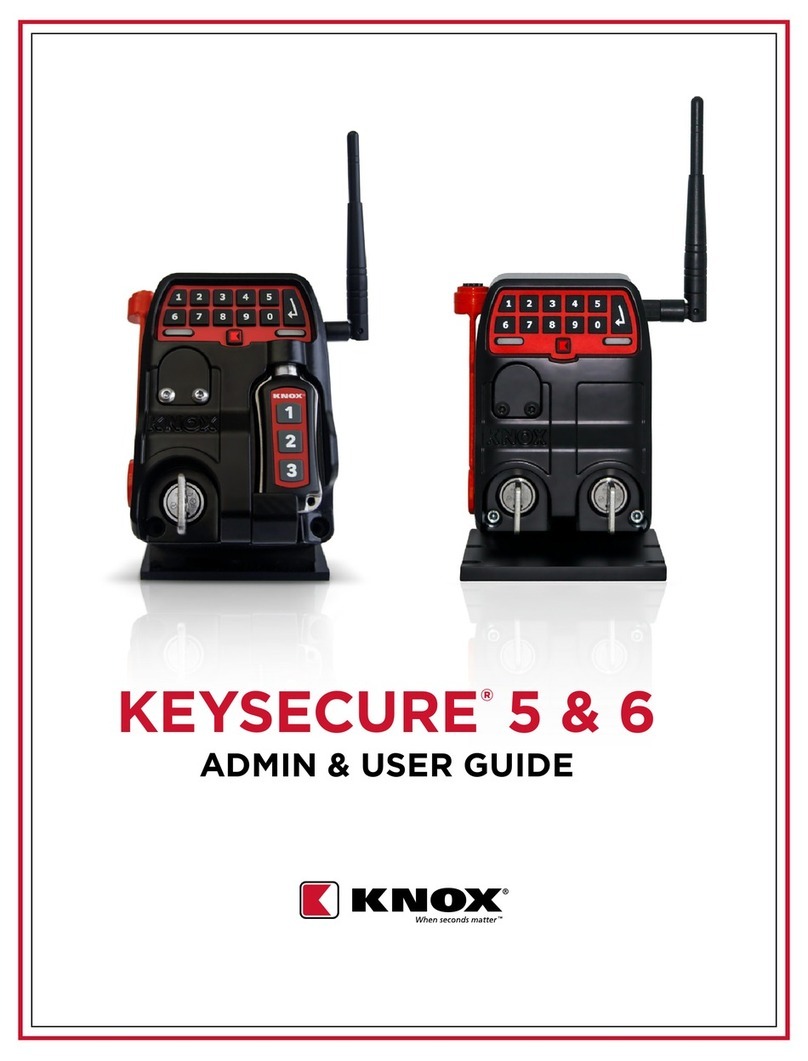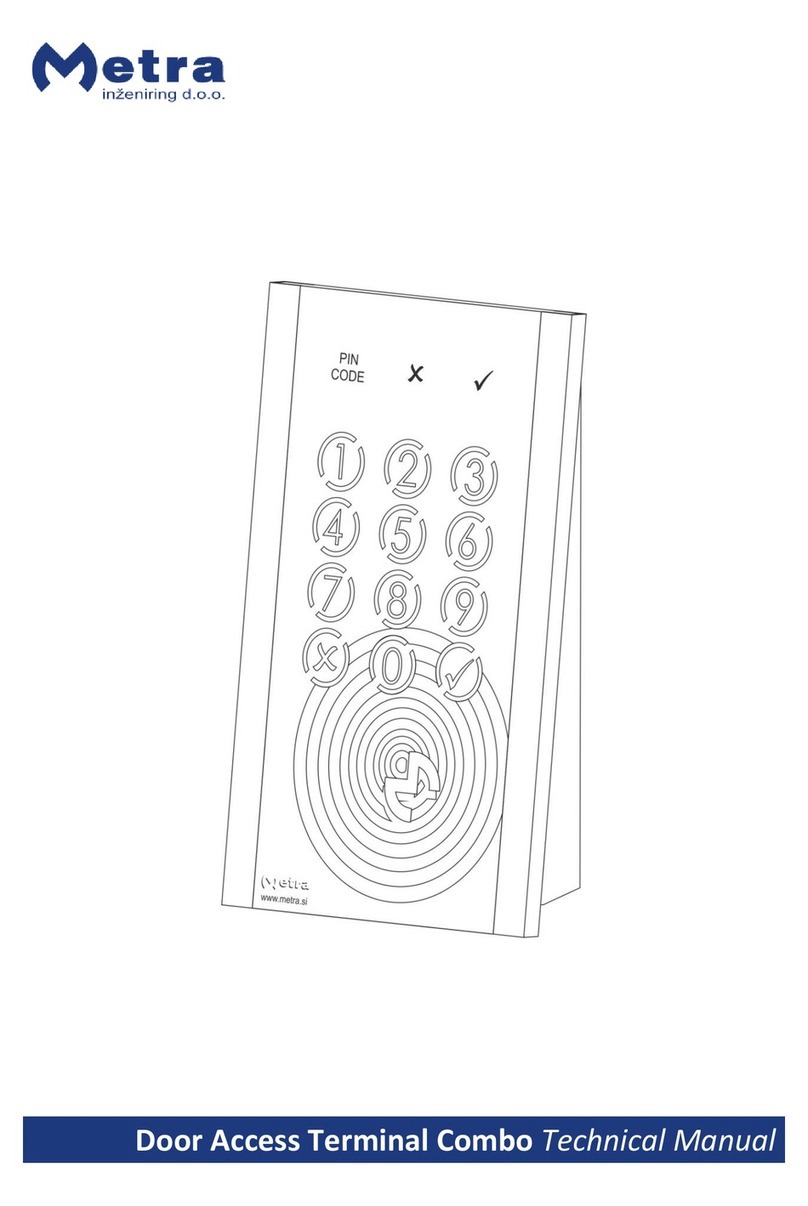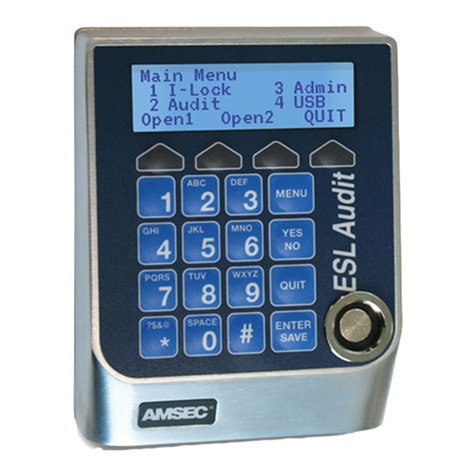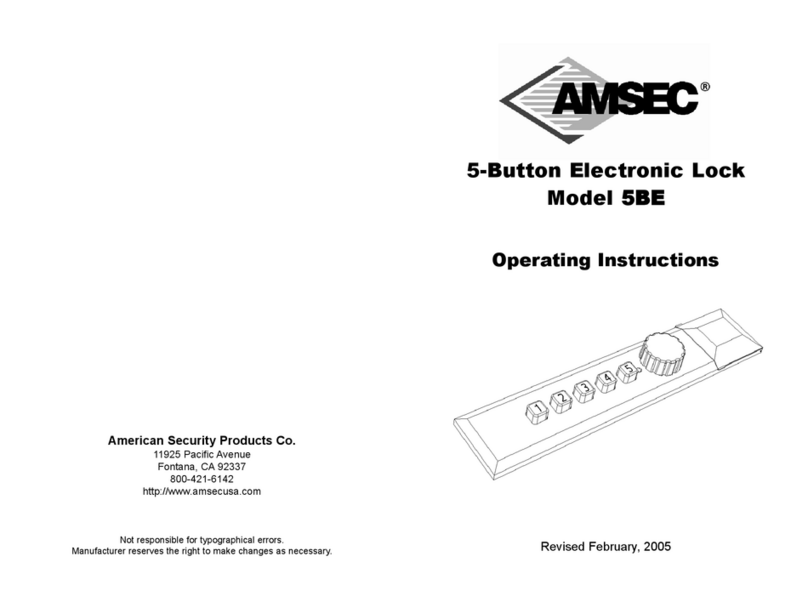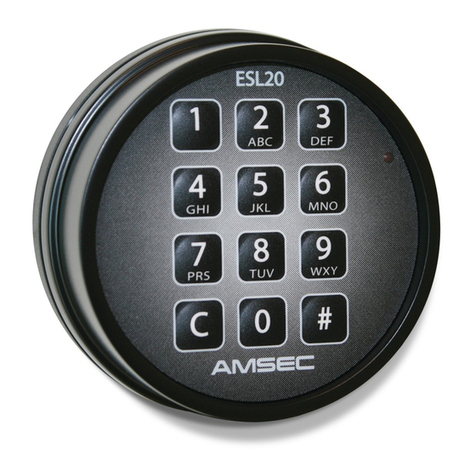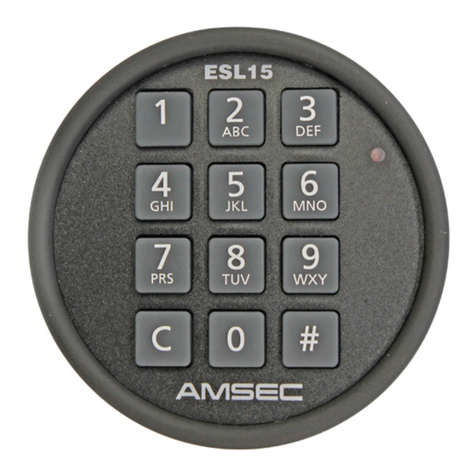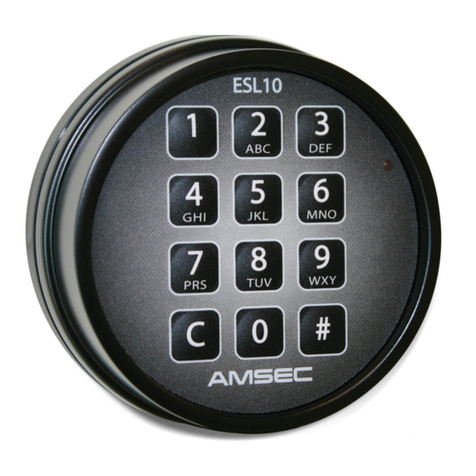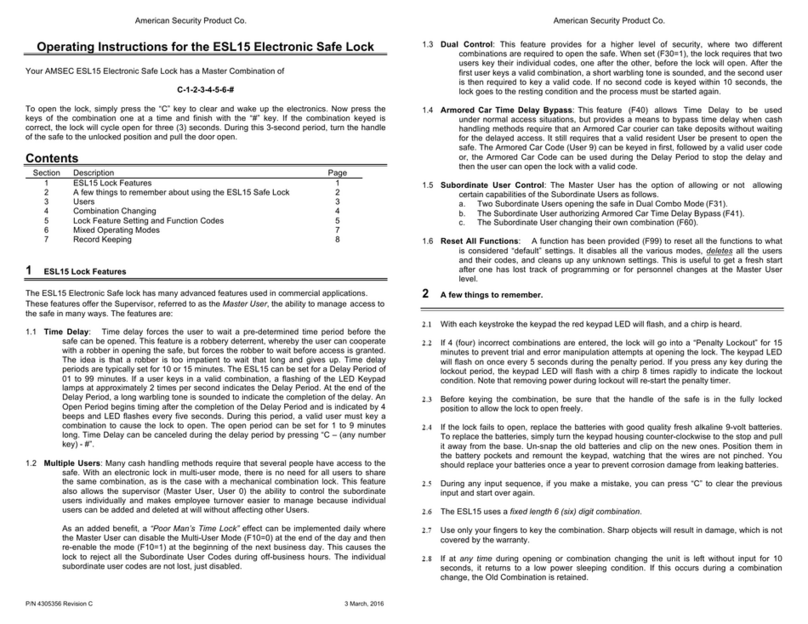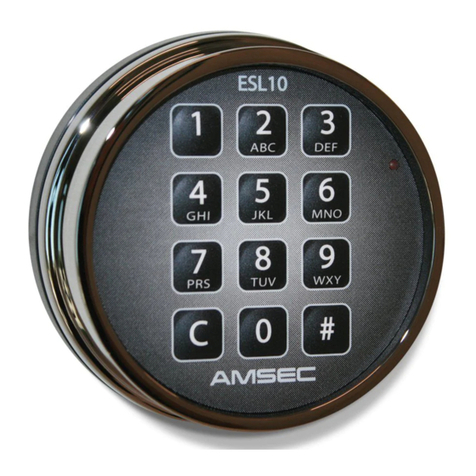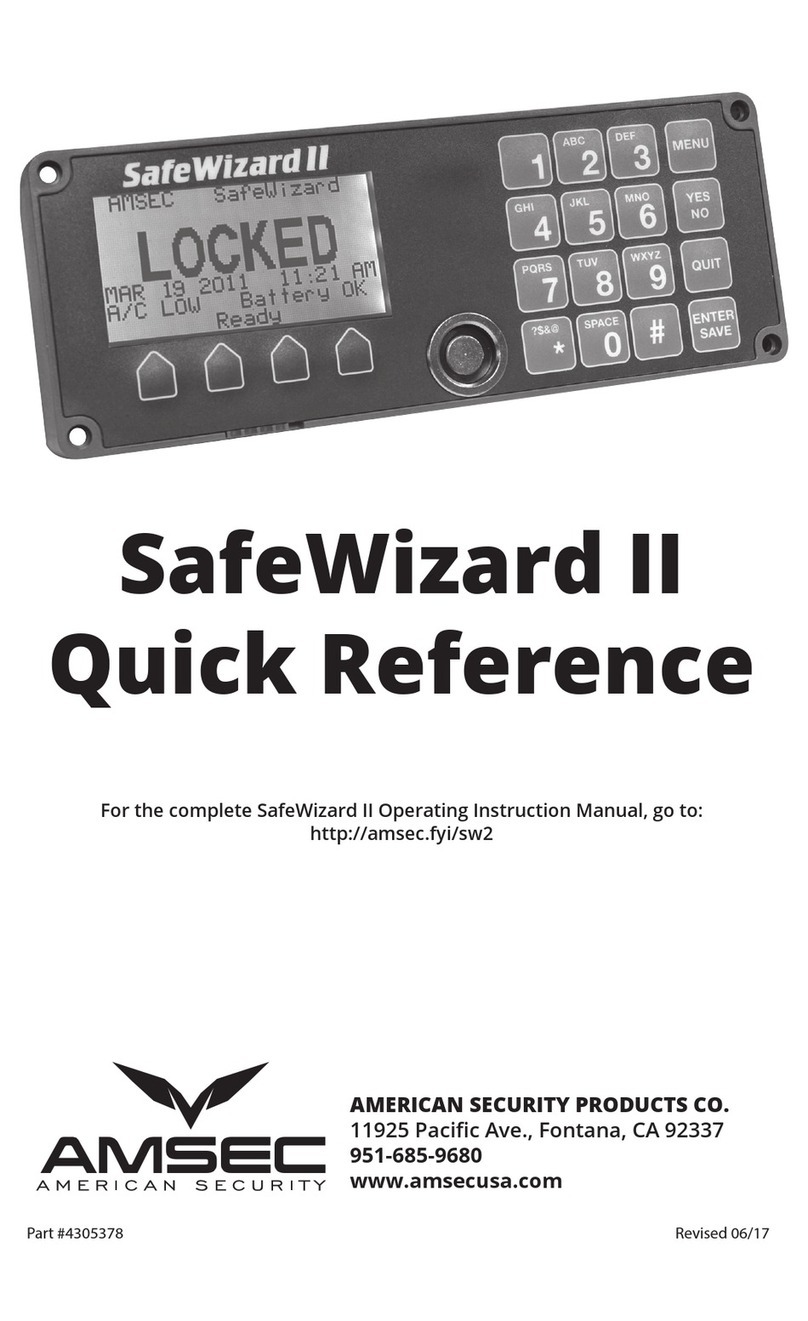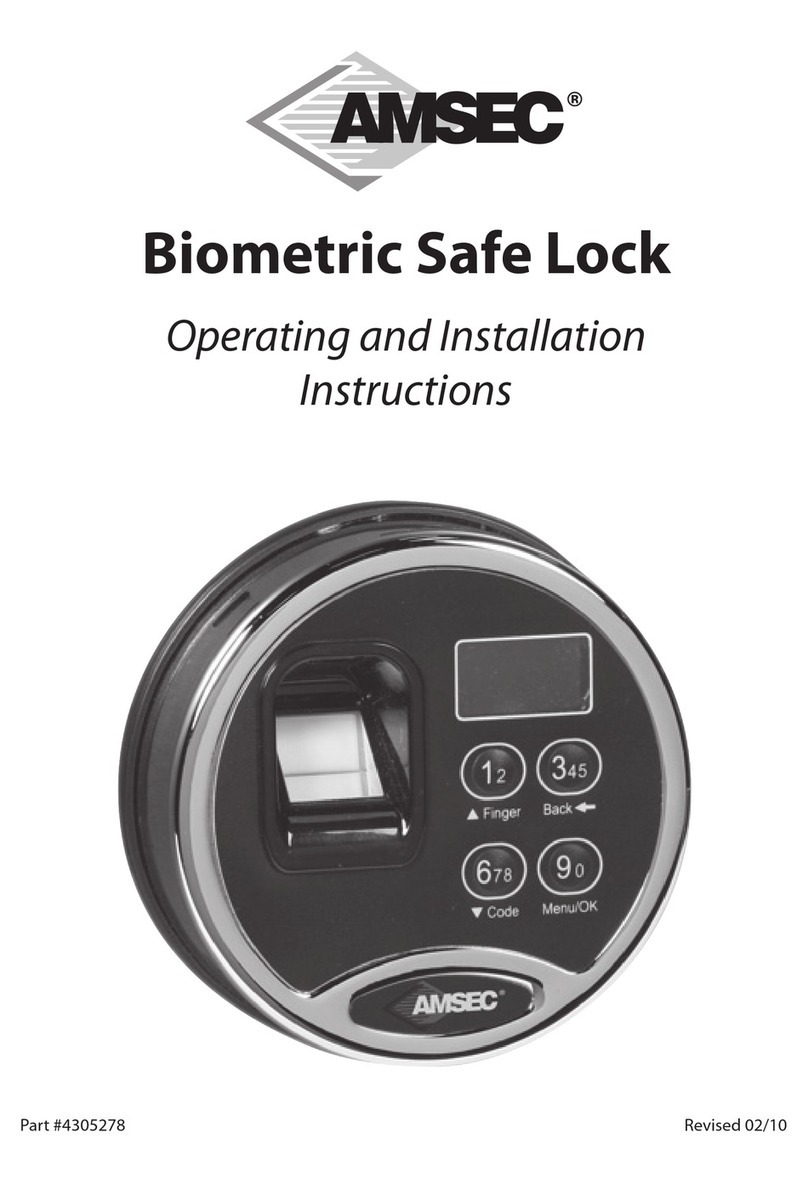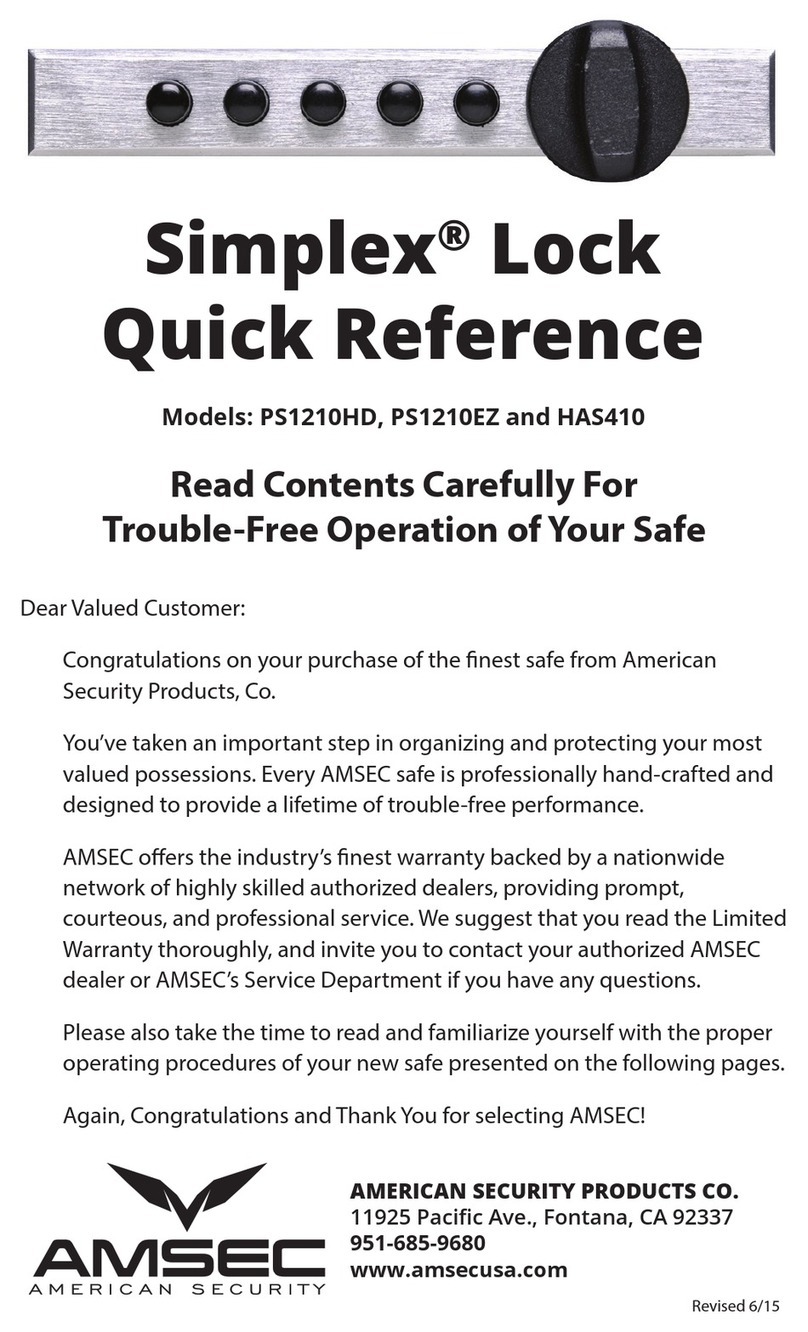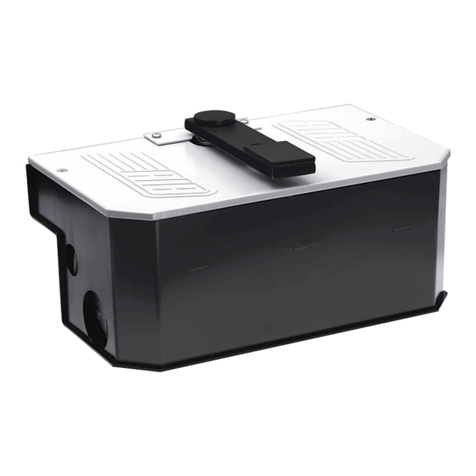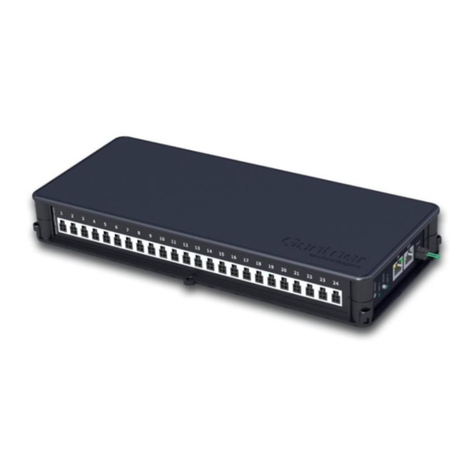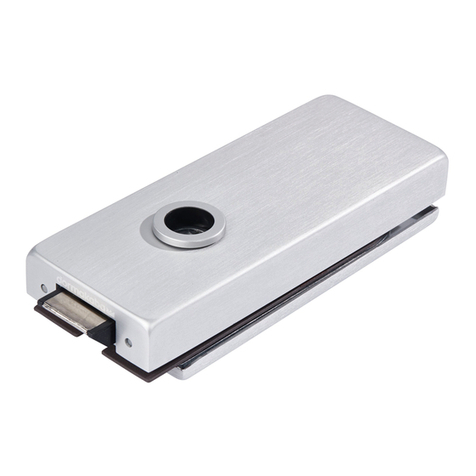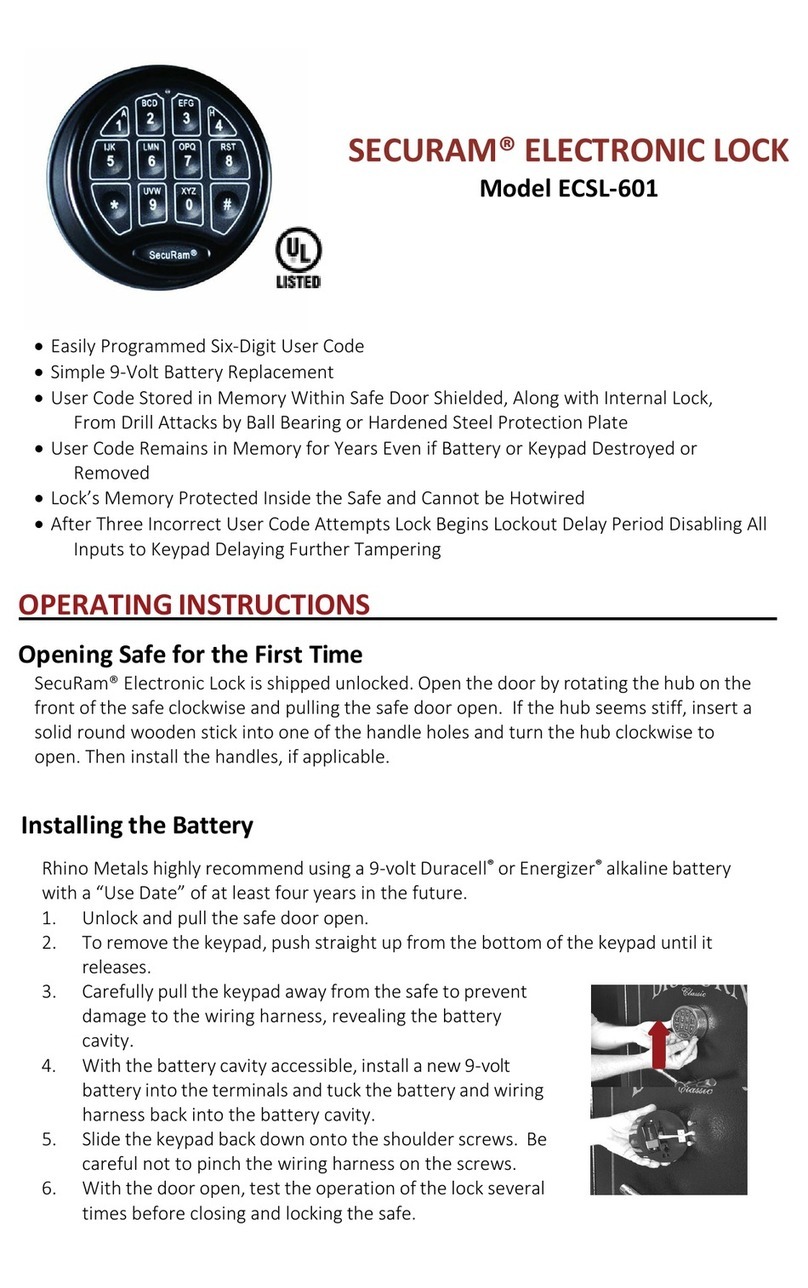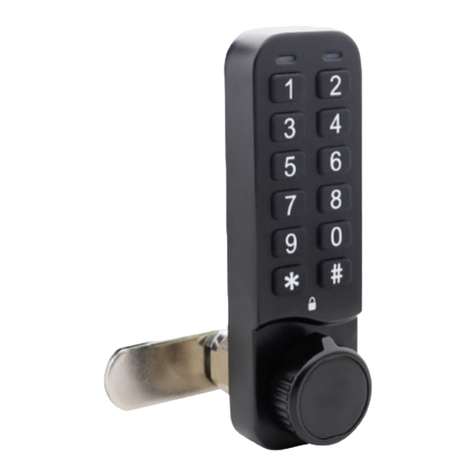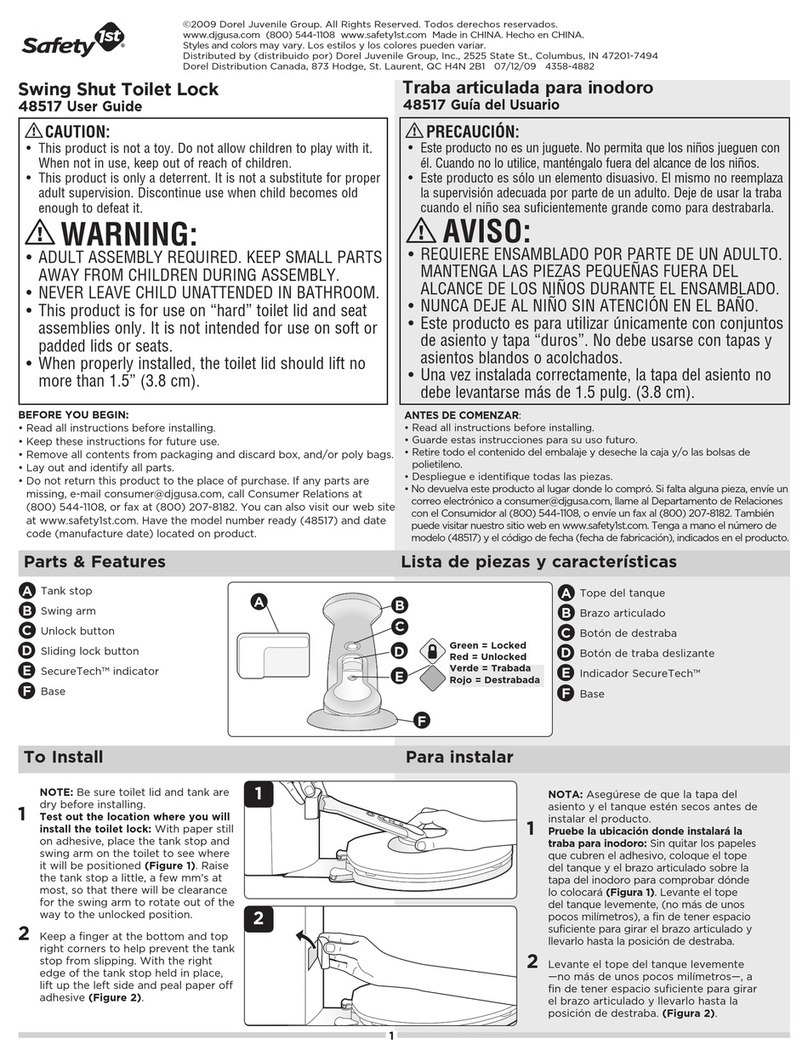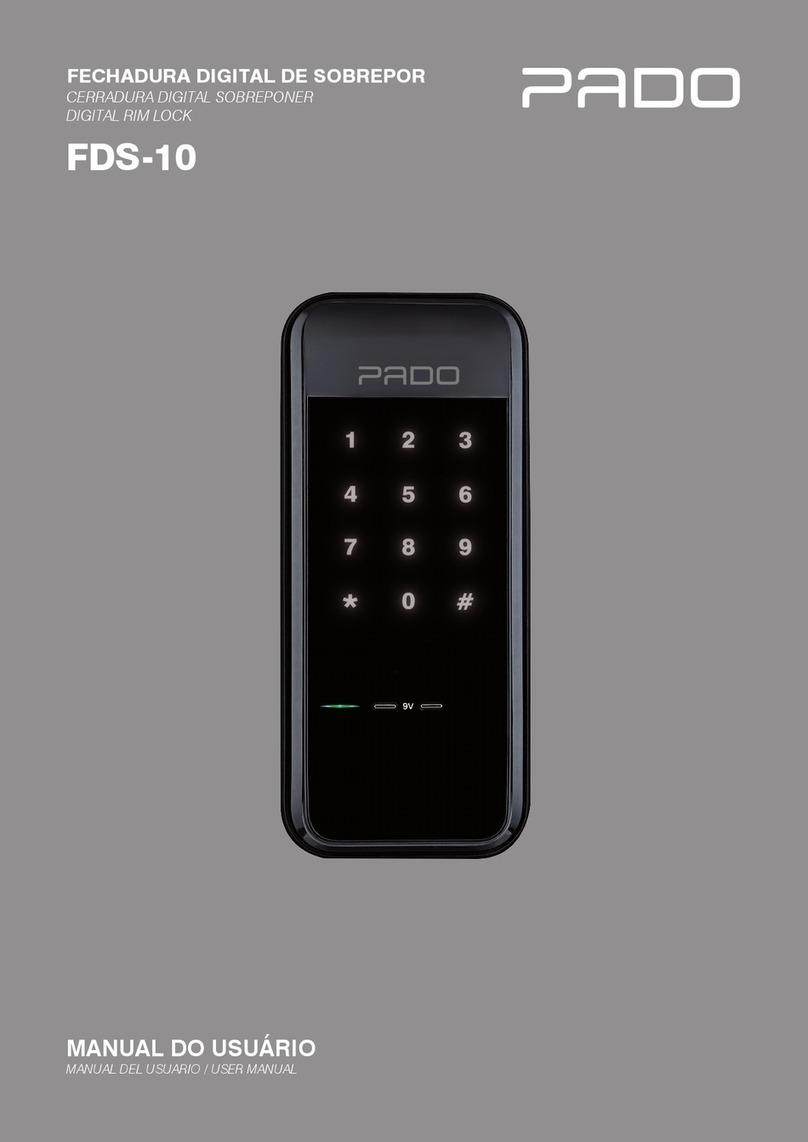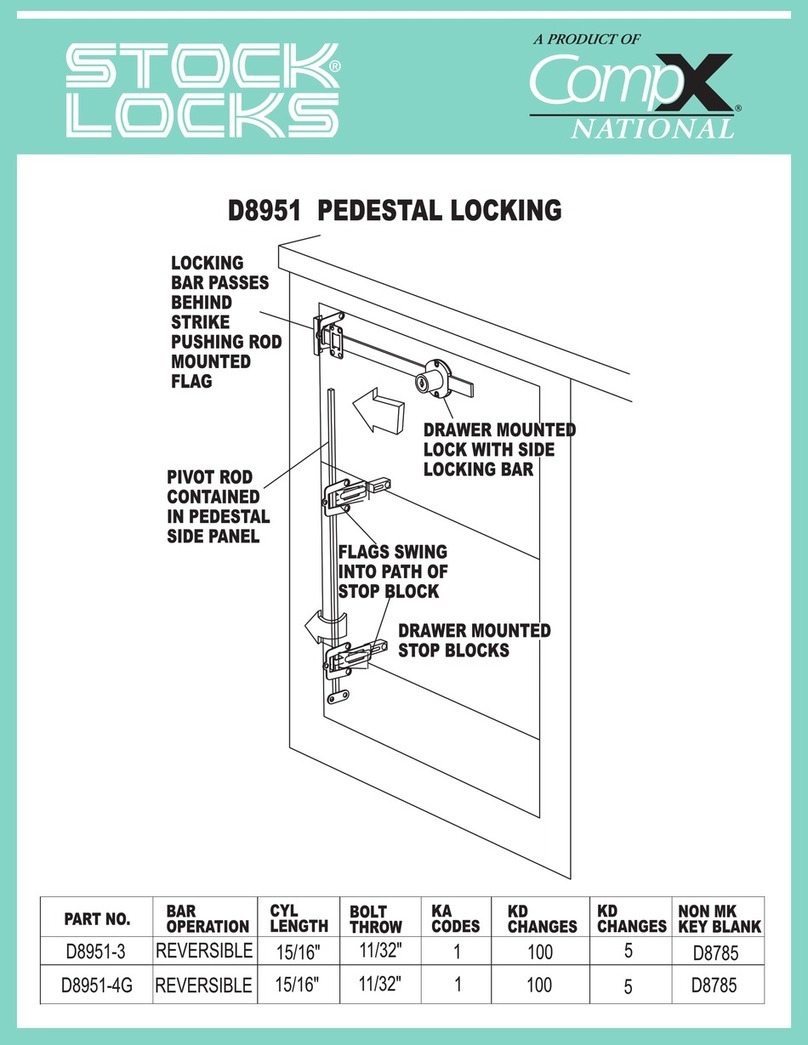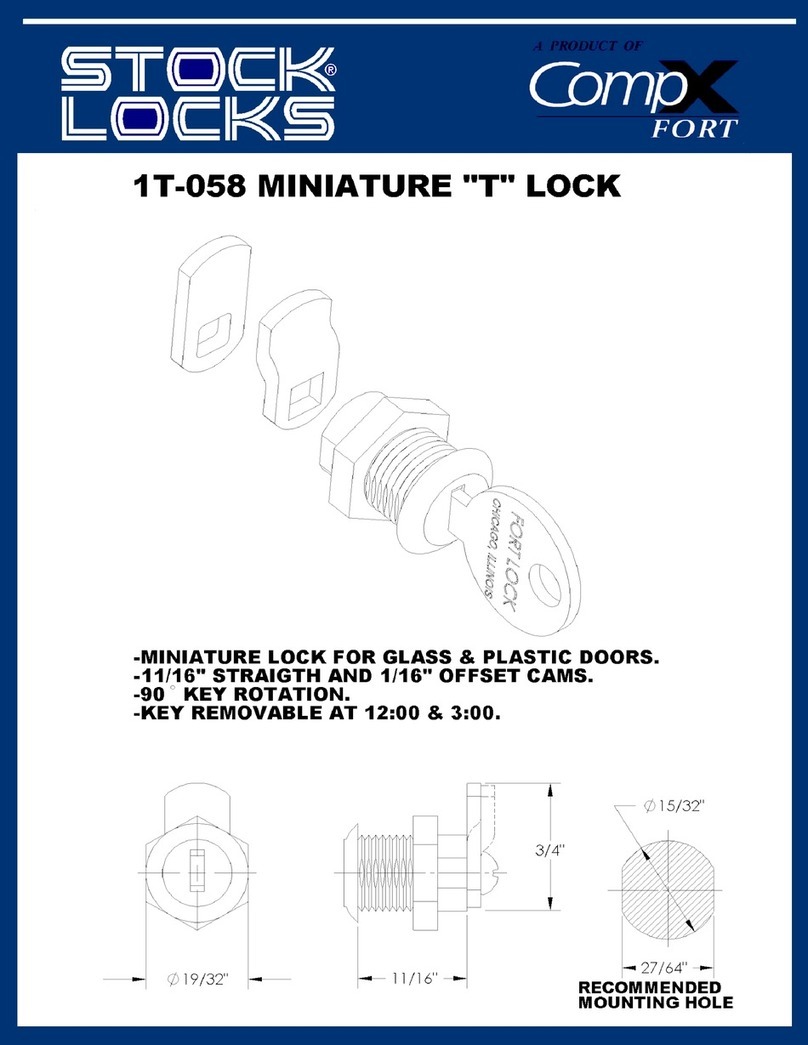Operating Instructions for the ESL20 Electronic Safe Lock
Your AMSEC ESL20 Electronic Safe Lock has a Master Combination of
C-1-2-3-4-5-6-#
To open the lock, simply press the “C” key to clear and wake up the electronics. Now press the
keys of the combination one at a time and finish with the “#” key. If the combination keyed is
correct, the lock will cycle open for three (3) seconds. During this 3-second period, turn the handle
of the safe to the unlocked position and pull the door open.
Contents
Section Description Page
1ESL20 Lock Features 1
2A few things to remember about using the ESL20 Safe Lock 2
3Users 3
4Combination Changing 4
5Lock Feature Setting and Function Codes 5
6Mixed Operating Modes 7
7Record Keeping 8
1ESL20 Lock Features
The ESL20 Electronic Safe lock has many advanced features used in commercial applications.
These features offer the Supervisor, referred to as the Master User, the ability to manage access to
the safe in many ways. The features are:
1.1 Time Delay:Time delay forces the user to wait a pre-determined time period before the
safe can be opened. This feature is a robbery deterrent, whereby the user can cooperate
with a robber in opening the safe, but forces the robber to wait before access is granted.
The idea is that a robber is too impatient to wait that long and gives up. Time delay
periods are typically set for 10 or 15 minutes. The ESL20 can be set for a Delay Period of
1 to 99 minutes. If a user keys in a valid combination, a flashing of the LED lamp
approximately 2 times per second indicates the Delay Period. At the end of the Delay
Period, a long warbling tone is sounded to indicate the completion of the delay. An Open
Period begins timing after the completion of the Delay Period and is indicated by 4 beeps
and LED flashes every five seconds. During this period, the user must key a combination
and cause the lock to open. The open period can be set for 1 to 9 minutes long. Time
Delay can be canceled during the delay period by pressing “C –(any number key) -#”.
1.2 Multiple Users:Many cash handling methods require that several people have access to the
safe. With an electronic lock in multi-user mode, there is no need for all users to share
the same combination, as is the case with a mechanical combination lock. This feature
also allows the supervisor the ability to control the subordinate users individually and
makes employee turnover easier to manage because individual users can be added and
deleted at will without affecting others. A “Poor Man’s Time Lock” effect can be
implemented daily where the Master User can disable the Multi-User Mode at the end of
the day and then re-enable the mode at the beginning of the next business day. This
causes the lock to reject all the Subordinate User Codes during off-business hours. The
individual subordinate user codes are not lost, just disabled.
1.3 Dual Control:This feature provides for a higher level of security, where two different
combinations are required to open the safe. When set, the lock requires that two users
key their individual combinations, one after the other, before the lock will open. After the
first user keys a valid combination, a short warbling tone is sounded, and the second user
is then required to key a valid code. If no second code is keyed within 10 seconds, the
lock goes to the resting condition and the process must be started again.
1.4 Armored Car Time Delay Bypass:This feature allows Time Delay to be used under
normal access situations, but provides a means to bypass time delay when cash handling
methods require that an Armored Car courier can take deposits without waiting for the
delayed access. It still requires that a valid resident User be present to open the safe.
The Armored Car Code (User 9) can be keyed in first, followed by a valid user code or,
the Armored Car Code can be used during the Delay Period to stop the delay and then
the user can open the lock with a valid code.
1.5 Duress Alarm:This feature requires that one of the optional Expansion Modules
(ESL20EXP1, ESL20EXP2 or ESL20EXP3) be attached to provide electrical connection
to external systems like alarms and monitoring services. The feature allows a user to
secretly signal that they are under duress, or being forced to open the safe in a robbery
situation. When a user keys a combination, finishing with the last number of the
combination 1 digit high or 1 digit low, a one second contact closure of the output relay is
caused. This contact closure is the same as if someone had pushed a “panic” button to
summon help. By signaling secretly at the safe, the user doesn’t risk angering the robber
and possible injury.
1.6 External Control:This feature allows the ESL20 to be disabled and enabled by an auxiliary
device like an Access Manager, Key Switch, external Alarm System, etc. The Expansion
Modules (ESLAC, ESL20EXP1 and ESL20EXP2) provide terminals for external device
connection. When the External Control Mode is enabled and the Lock Enable input loop
is open, the lock will not open when a combo is entered, it will indicate with a quick 4
beep/flash. The Factory Reset Code will clear this condition if it was set accidentally.
1.7 Auxiliary AC Power:The ESL20 can utilize an external power source to operate at
optimum performance with the batteries acting as a backup system in the case of power
failure. This feature requires one of the Expansion Modules, ESLAC (which includes a
transformer) or an ESL20EXP1 or ESL20EXP2 with the ESLTFMR added.
1.8 Subordinate User Control:The Master User has the option of allowing or not allowing
certain capabilities of the Subordinate Users as follows.
a. The Subordinate User changing their own combination.
b. Two Subordinate Users opening the safe in Dual Combo Mode.
c. The Subordinate User authorizing Armored Car Time Delay Bypass.
1.9 Reset All Functions:A function has been provided to reset all the functions to what is
considered “default” settings. It disables all the various modes, deletes all the users, their
codes, and cleans up any unknown settings. This is useful to get a fresh start after
programming has been lost track of or for personnel changes at the Master User level.
2A few things to remember.
2.1 With each keystroke the red lamp on the keypad will flash and a chirp can be heard.
2.2 If 4 (four) incorrect combinations are entered, the lock will go into a “Penalty Lockout” for 15
minutes to prevent trial and error manipulation attempts at opening the lock. The red lamp will
flash once every 5 seconds during the penalty period. If you press any key during the lockout
period, the red lamp will flash with a chirp 8 times rapidly to indicate the lockout condition.
Note that removing power during lockout will only re-start the penalty timing.
2.3 Before keying the combination, be sure that the handle of the safe is in the fully locked
position to allow the lock to open freely.

